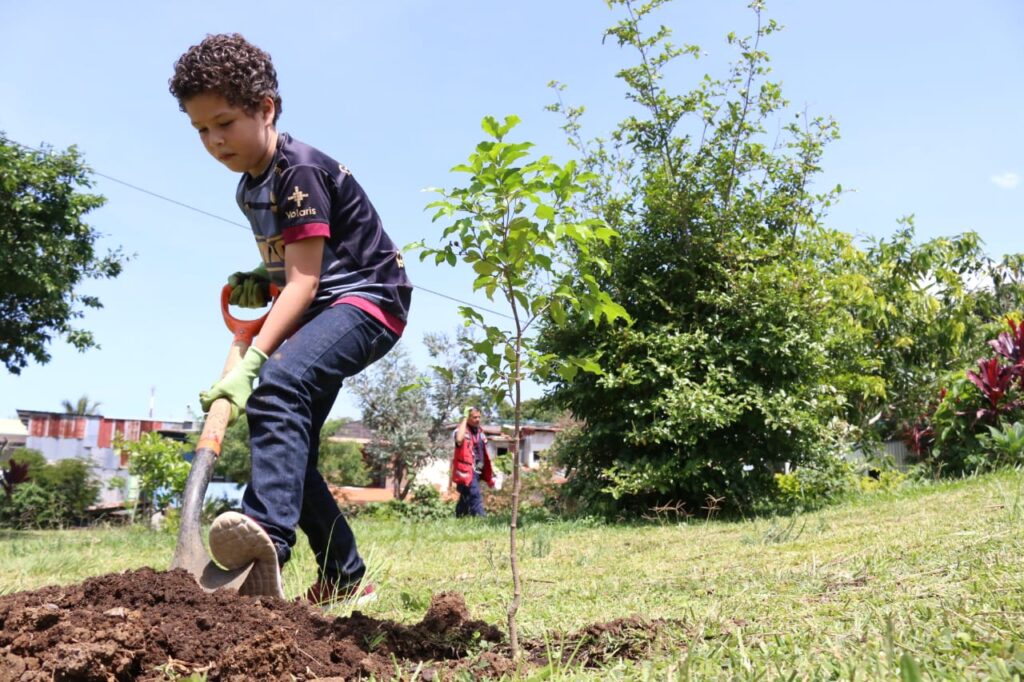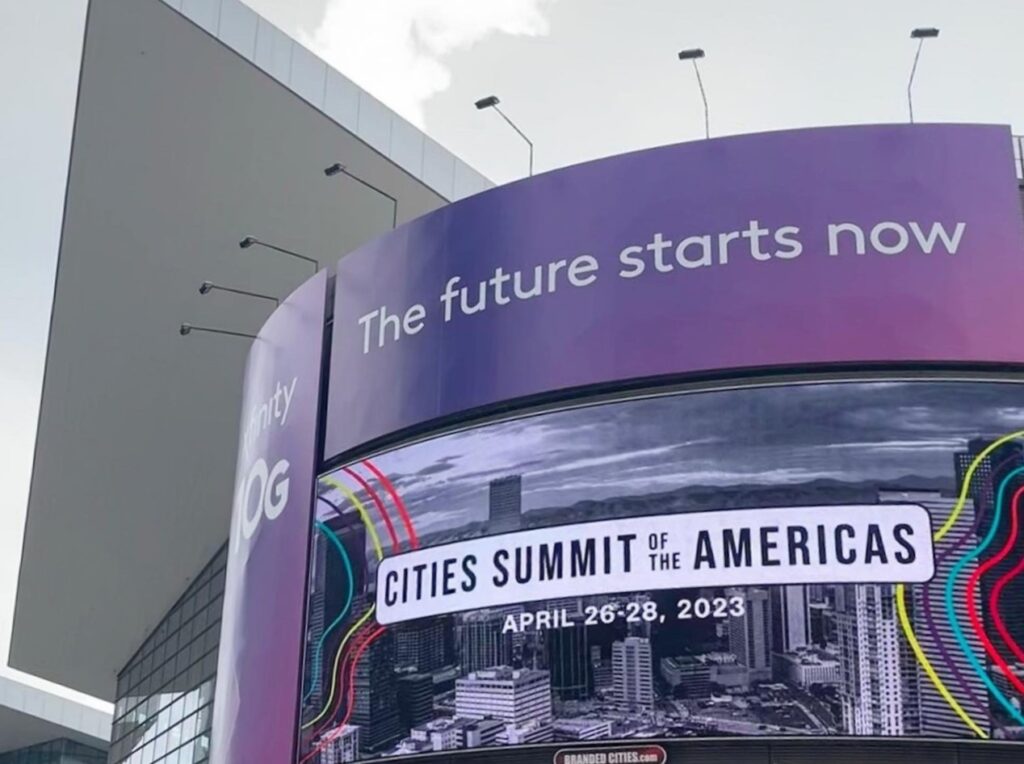

More than 200 mayors from cities of all sizes across Latin America, the Caribbean, the United States, and Canada are gathering in Denver, Colorado, on April 26-28 to explore steps they can take on a wide range of issues, ranging from democracy and inclusion to housing and safety. Several sessions will focus on energy or climate and the environment.
The Cities Summit of the Americas—an initiative the United States announced last year at the Ninth Summit of the Americas—will include not only elected local leaders and other officials but representatives of civil society, business, academia, youth, culture and the arts, indigenous groups, and others. More than 3,500 participants have registered to attend.
Local governments have the potential to bring about real change on issues such as the environment, because they have face-to-face contact with citizens every day, according to Mayor Ángela Aguilar Vargas of Heredia, Costa Rica. That is not always the case with distant officials in national governments, she said in an interview.

An aerial view of Heredia, which has implemented programs to clean up solid waste and plant more trees.
“The relationship with municipalities is more direct,” she said. Aguilar leads the city of Heredia and the administrative district or canton of the same name, which has a mostly urban population of about 144,000 people and is located north of the country’s capital, San José.
Heredia has adopted a municipal climate change policy and implemented various environmental programs, including efforts to clean up solid waste and plant more trees. When local officials are out in a community on a Saturday, helping volunteers pick up trash, that sets a good example and provides an opportunity to raise awareness about the need to take care of the environment, Aguilar said.
Today’s children already understand that, she said—adding that they seem to have acquired that “chip” in their brains in school—but adults sometimes still have a lot to learn.
Aguilar also stressed the need for mayors to work closely with their counterparts in nearby local governments, noting that the 10 cantons that make up the province of Heredia have stepped up coordination on activities and policies on environmental and other issues. After all, she said, if one canton does not manage its waterways properly, its neighbors may also see increased flooding when the rains come.

In March, around 130 volunteers participated in a campaign to clean up public spaces in Heredia. Credit: Government of Heredia
The 10 cantons have been working to formalize their cooperation through an agreement which will allow them to leverage more resources for projects that will benefit the whole province, Aguilar said.
Some actions are beyond the reach of cantons or provinces, she noted. For example, she said, Heredia would like to see some changes to regulations governing public buses and bus routes, in order to reduce air pollution, but public transit in Costa Rica falls under the purview of the central government.
The city of Heredia has been among the top-performing cities in a national environmental awards program called Bandera Azul Ecológica, but Aguilar said she encourages her team to focus on achieving their goals instead of on earning recognition.
“It’s not about working for the award. It’s about working because you are truly meeting objectives that are measurable and have an impact on the community,” she said.
Aguilar is one of several mayors scheduled to participate in a discussion at the Cities Summit titled “Risks and Rewards of the Energy Transition in the Americas: A Local Perspective on Sustainable Governance.” The session is sponsored by the Atlantic Council and the Latin American and Caribbean Network for Democracy.
Other sessions or roundtables will examine such topics as accelerating investment for climate action; advancing an equitable transition to clean energy; implementing local climate adaptation measures; financing sustainable development at the subnational level; overcoming financing barriers to climate infrastructure projects; navigating the nexus of climate change, migration, and displacement; implementing the circular economy; and building resilience with nature in cities.

The first Cities Summit of the Americas, taking place in Denver, is expected to bring together more than 200 mayors and thousands of other participants. Credit: biennialoftheamericas.org
Mayor Jaime Pumarejo of Barranquilla, Colombia, who is scheduled to participate on several panels, has emphasized the need for the world’s mayors to be part of the conversation on climate and energy.
“We are acting on climate change in the forefront every day,” he said during a panel discussion at the United Nations Biodiversity Conference held in December in Montreal, Canada. “We see the effects of climate change, and we see our citizens asking us for more action.”
The biggest barrier, Pumarejo said, is financing, adding that “lack of financing for cities is hindering the ability to adapt to climate change, to preserve biodiversity, to enable us to finance nature-based solutions.”
The fact that the first Cities Summit of the Americas is being held sends a strong message that local authorities have an important role in issues that were once discussed mainly at the national level, said Manuel Trujillo Saad, Head of International Relations in Barranquilla’s Economic Development Secretariat.
“You are seeing cities stepping up to the plate and having a very strong voice,” he said in an interview. As important as it is to have leadership at the national level, he said, it is not enough, as the voices of citizens are not always heard.
“I think mayors really are that strong connection point with the citizens, and they are like the first line of response,” he added.
The Mayor’s Office of Barranquilla and the CAF Development Bank of Latin America launched an initiative in December 2021 to protect biodiversity in cities in Latin America and the Caribbean. The “BiodiverCities” initiative started with eight cities in the region and has grown to include 119, according to Trujillo.
About 80% of people in this region live in urban areas, he said, so it makes sense for cities to do all they can to expand green spaces and protect their biodiversity and ecosystems as a way to help combat climate change and improve living conditions at the same time.
Barranquilla has built or recovered 260 parks in the past decade, through a program called “Todos al Parque” (“Everyone to the Park”), and earlier this year the World Resources Institute awarded the Mayor’s Office a $250,000 prize for that effort.

Residents of Barranquilla, Colombia, will soon be able to visit an “eco-park” in a large mangrove swamp called the Ciénega de Mallorquín, a previously abandoned area within city limits. Credit: Mayor’s Office of Barranquilla
The Pumarejo administration is also getting ready to open the first phase of a major “eco-park” in a large mangrove swamp called the Ciénaga de Mallorquín, which is within city limits but had been abandoned. That project will include restoring an urban beach to this city of 1.2 million people, located on Colombia’s Caribbean coast.
On the energy transition front, the city has been exploring the possibility of harnessing its sun and wind resources—“the things that people usually complain about in Barranquilla,” Trujillo said with a smile. A local public-private renewable energy company is in charge of installing solar panels on all public buildings in the city, including schools, hospitals, and sports facilities.
Barranquilla also started talking to international companies about its offshore wind potential even before the national government had completed the legal framework required to make that possible, Trujillo said, adding that the city’s efforts spurred faster action at the national level. Eventually, he said, the city also hopes to be able to produce green hydrogen.
All this require long-term planning, complementary actions at different levels of government, and a vision that transcends any mayor’s term, he said. If a city wants to attract investment in clean energy, for example, it needs to think about its workforce and provide training in specific skills.
“Cities are starting to think about this in a long-term perspective,” Trujillo said.
 View Map
View Map